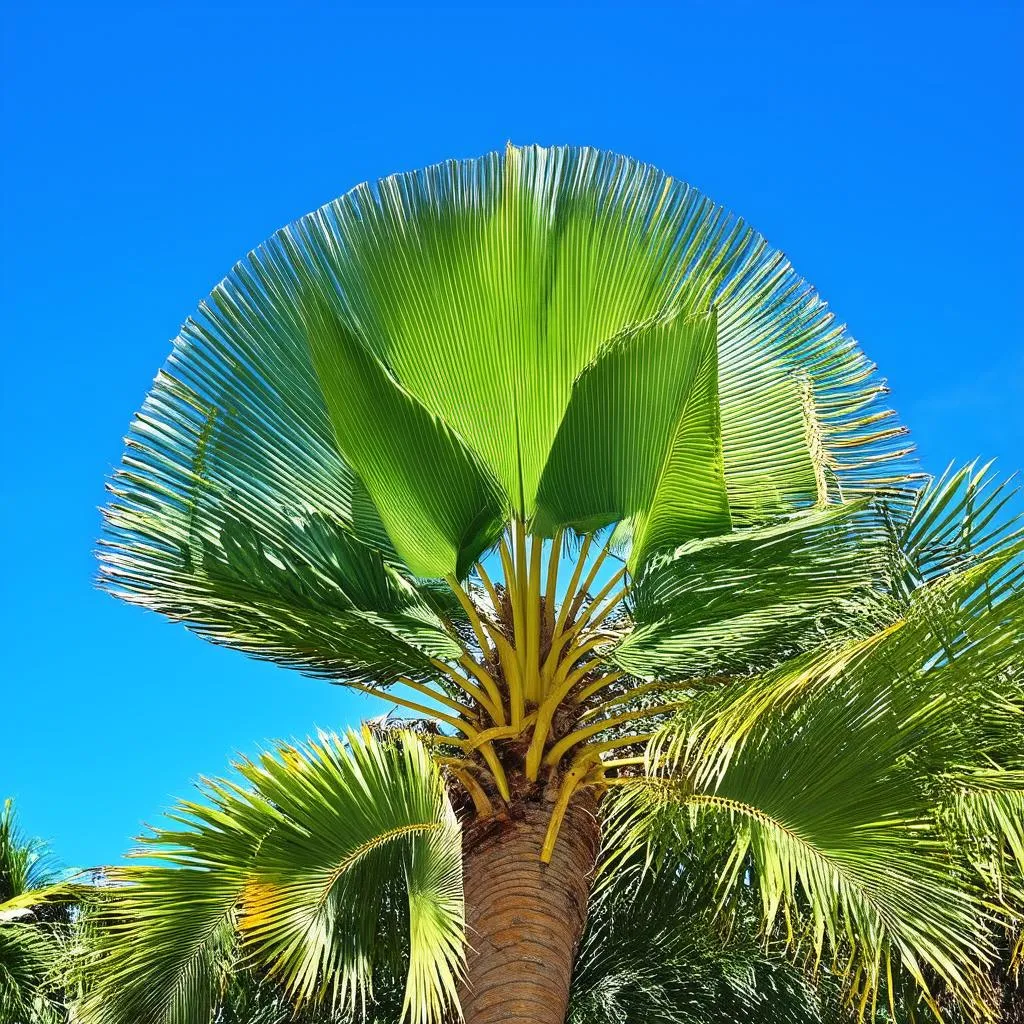Have you ever strolled through a tropical paradise, admiring the lush greenery, and found yourself wondering about the names of the majestic plants surrounding you? It’s easy to get lost in the beauty of it all and even easier to confuse one species for another. One common point of confusion for many plant enthusiasts is the difference between fan palms and traveler palms. Are they the same, or are they entirely different species? Let’s dive into the fascinating world of these tropical wonders and uncover the truth.
Unveiling the Truth: Fan Palms vs. Traveler Palms
Despite their somewhat similar appearances, fan palms and traveler palms are distinct species with unique characteristics. While the terms are often used interchangeably, understanding their differences can deepen your appreciation for the diversity of the plant kingdom.
What is a Fan Palm?
As their name suggests, fan palms are characterized by their large, fan-shaped leaves, also known as fronds. These fronds can range in size from a few inches to several feet across and often feature a pleated or folded texture. There are numerous species of fan palms, each with its own distinct appearance and growth habits. Some popular examples include the Chinese Fan Palm (Livistona chinensis), often seen gracing gardens and streetscapes, and the Mediterranean Fan Palm (Chamaerops humilis), native to the Mediterranean region.
 Close-up of a fan palm's frond
Close-up of a fan palm's frond
What is a Traveler Palm?
The Traveler Palm (Ravenala madagascariensis), on the other hand, isn’t actually a palm at all! Despite its name and palm-like appearance, it belongs to the Strelitziaceae family, making it more closely related to the Bird of Paradise flower. Native to Madagascar, the Traveler Palm is easily recognizable by its distinctive fan-like arrangement of leaves that grow in a single plane, resembling a giant, open fan.
 A traveler palm stands tall
A traveler palm stands tall
Why the Confusion?
The confusion between fan palms and traveler palms likely stems from the similar appearance of their leaves. Both feature large, fan-shaped fronds that add a touch of tropical elegance to any landscape. However, upon closer inspection, several key differences become apparent. Traveler palms have a more symmetrical, flat fan arrangement of leaves, while fan palms typically have a more rounded, three-dimensional shape.
Traveler Palms and Feng Shui
Beyond their botanical classifications, traveler palms hold cultural significance in some cultures. In Feng Shui, the traveler palm, with its upward growth and association with water, symbolizes abundance, prosperity, and good fortune. Its presence in a home or garden is believed to attract positive energy and invite good luck.
Exploring the World of Palms
Whether you’re a seasoned botanist or simply appreciate the beauty of the natural world, understanding the difference between fan palms and traveler palms can enhance your next travel experience. Imagine strolling through the Royal Botanic Gardens in Sydney, Australia, and being able to identify the various palm species, impressing your travel companions with your newfound knowledge. Or picture yourself relaxing on a beach in Bali, Indonesia, shaded by the majestic fronds of a native fan palm, knowing that you’re witnessing the diversity of the plant kingdom firsthand.
For more fascinating insights into the world of travel and nature, explore the wealth of information available on TRAVELCAR.edu.vn.
